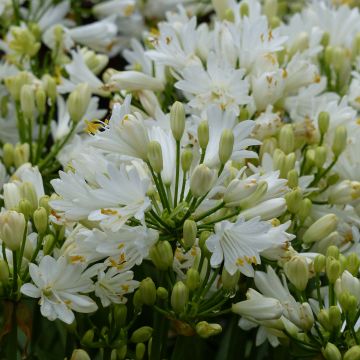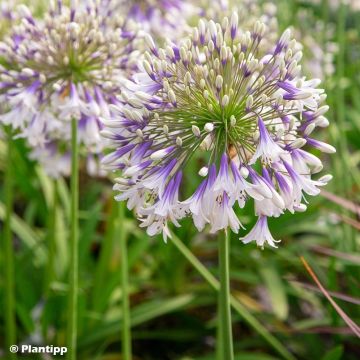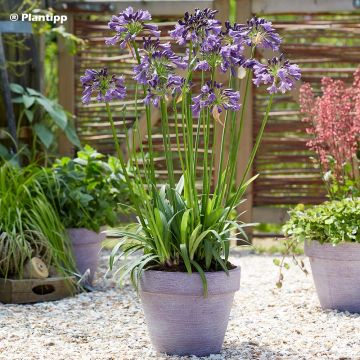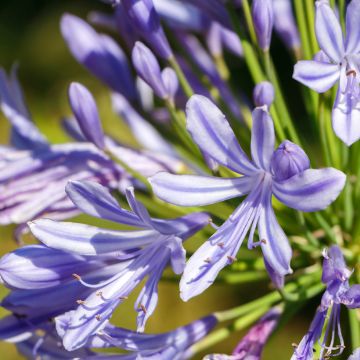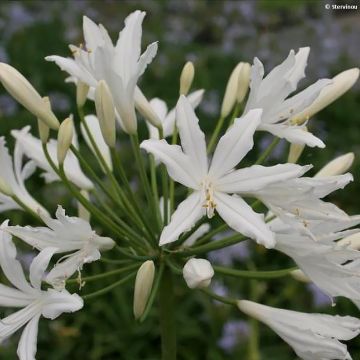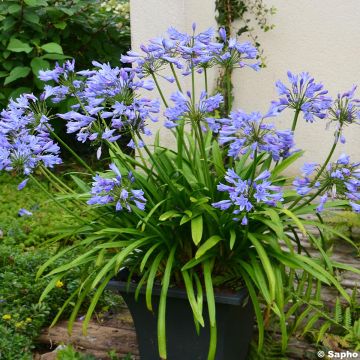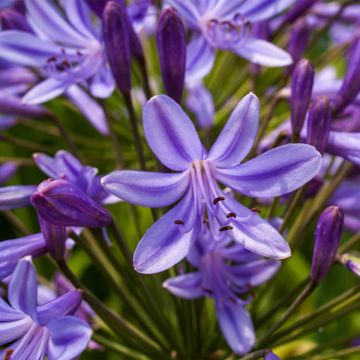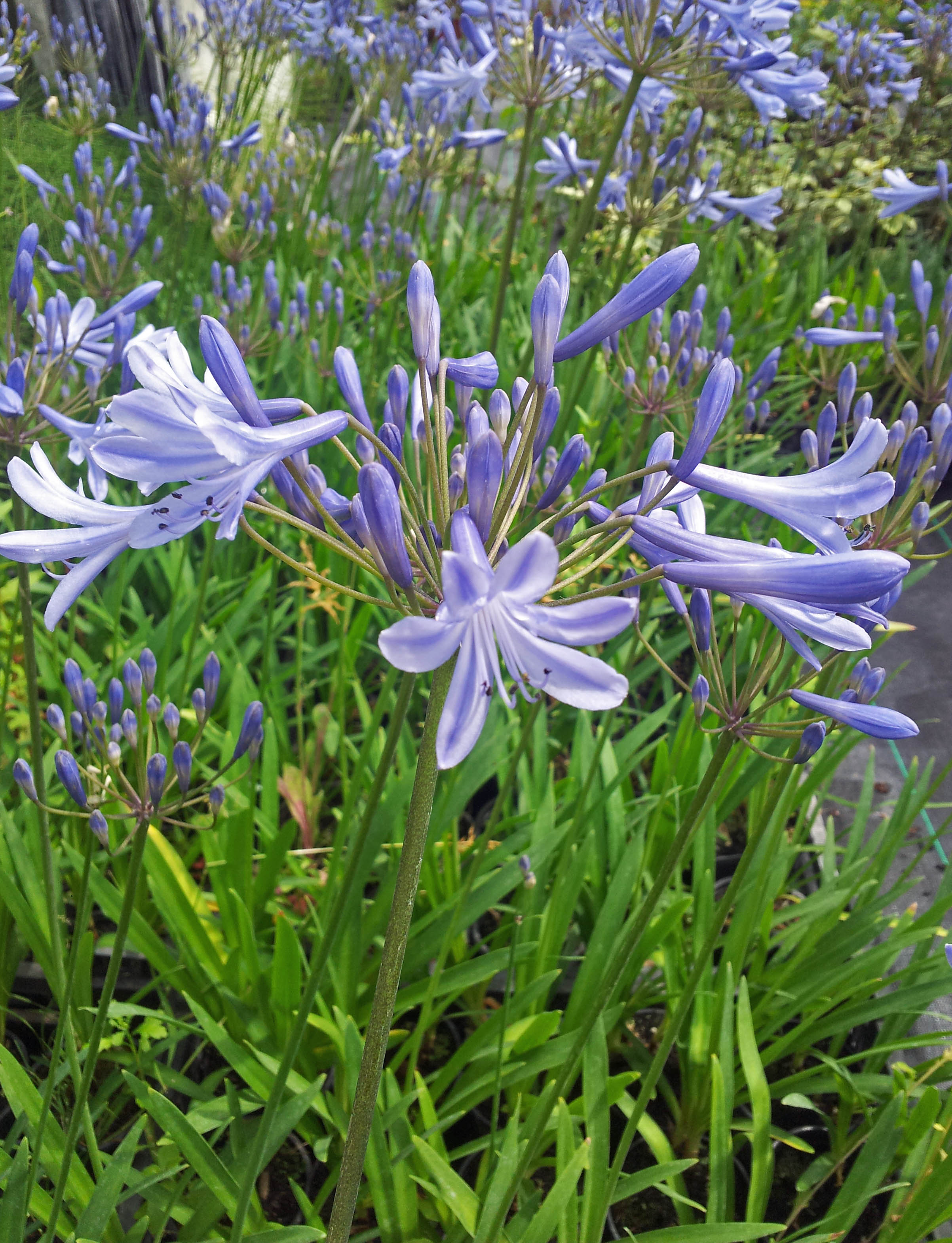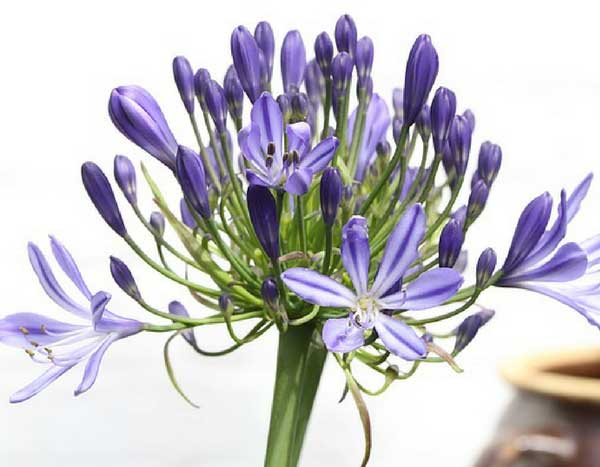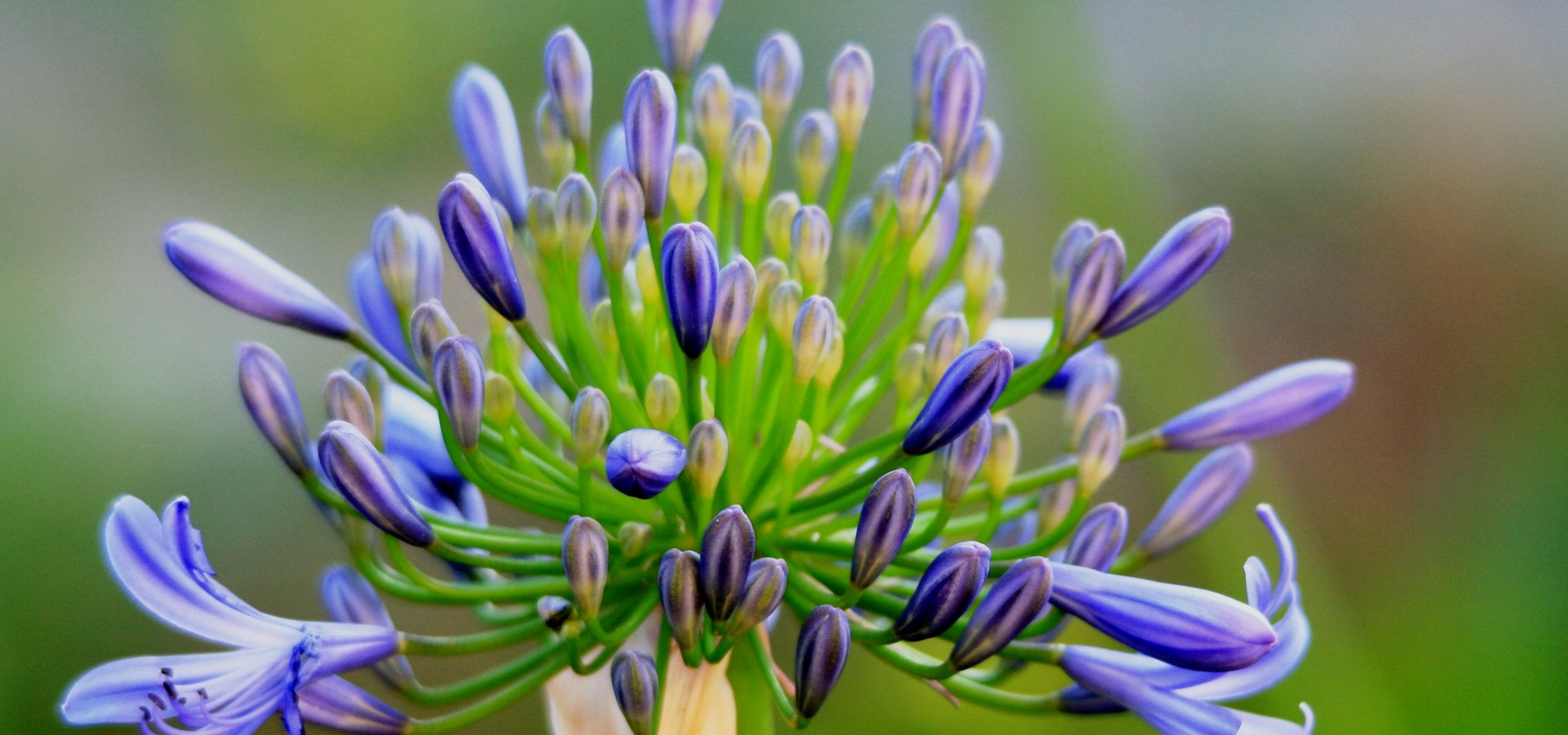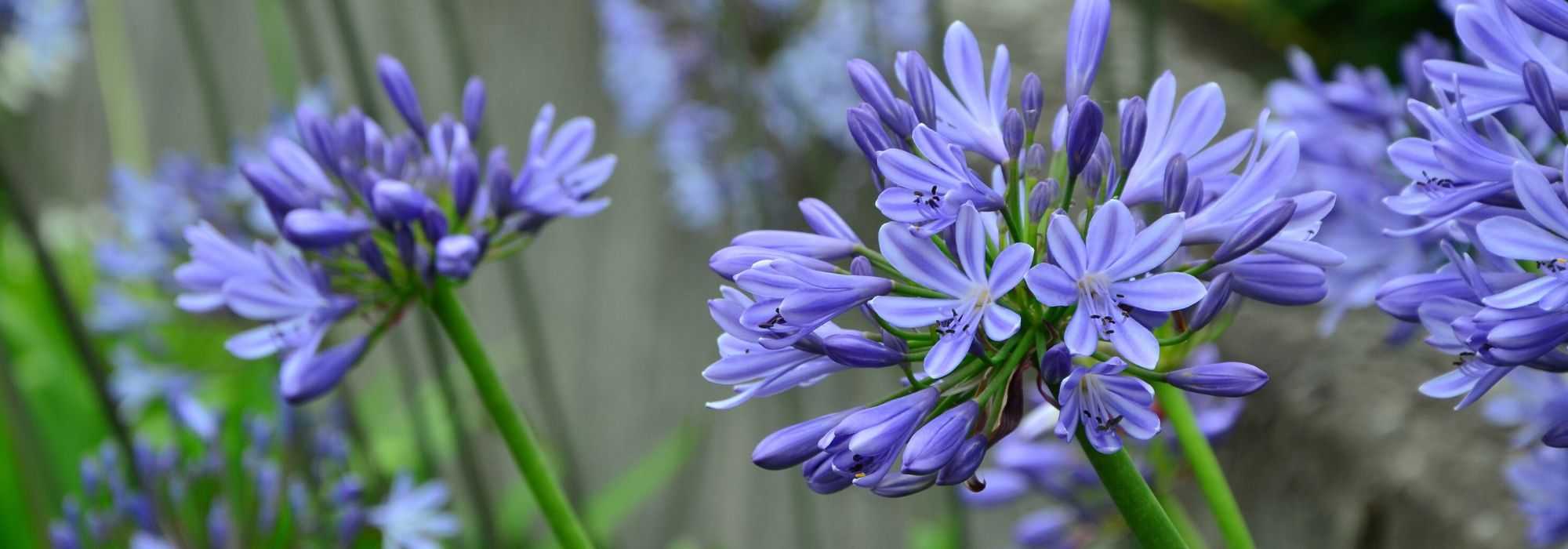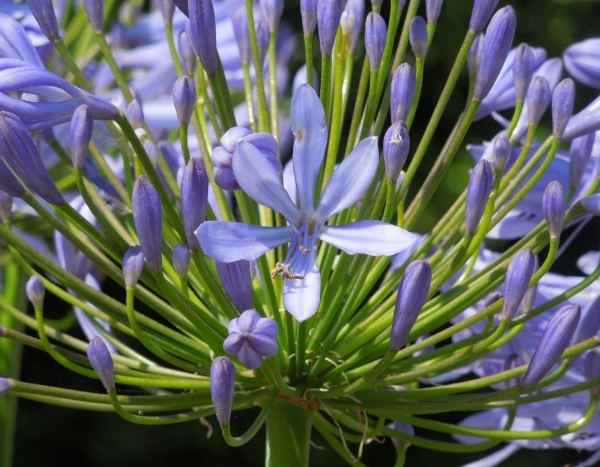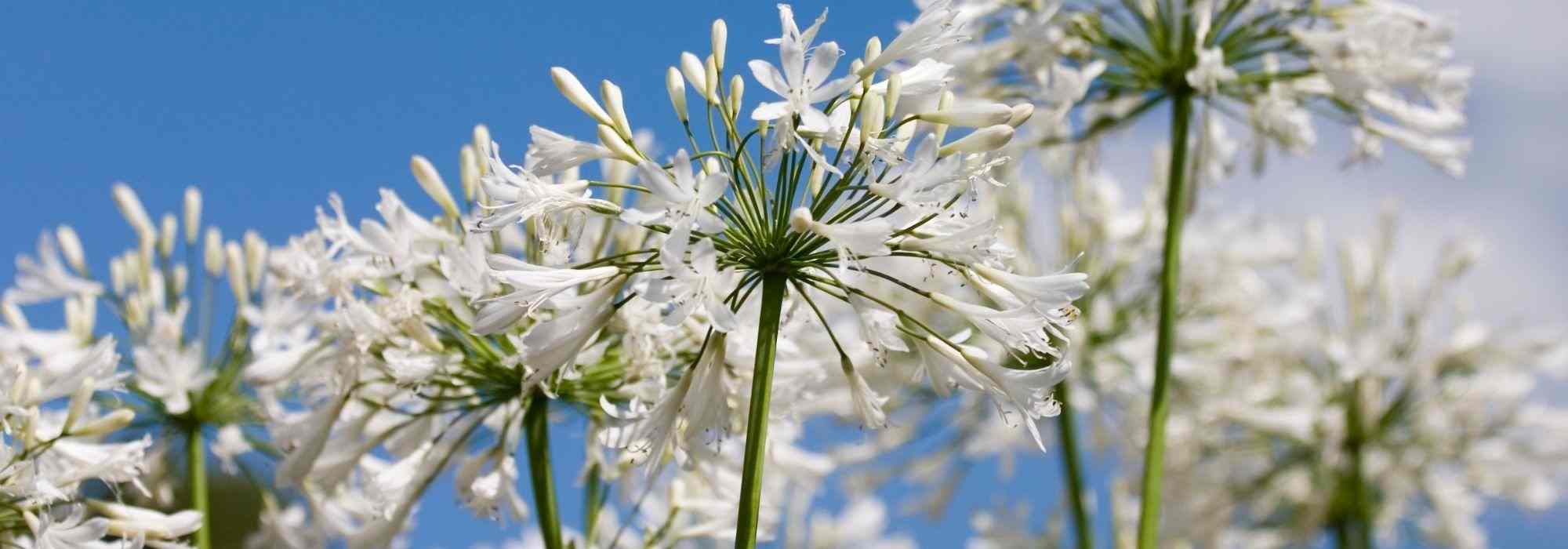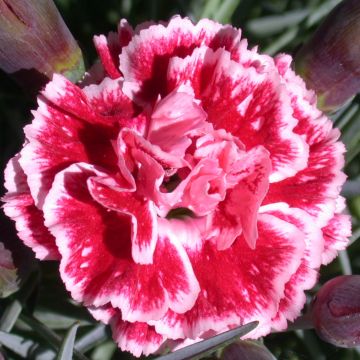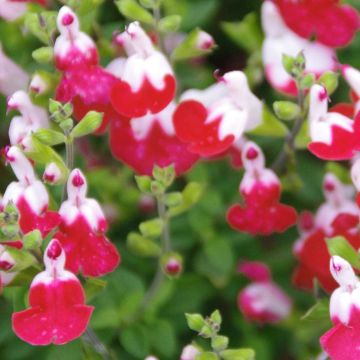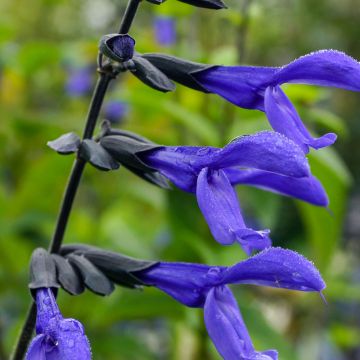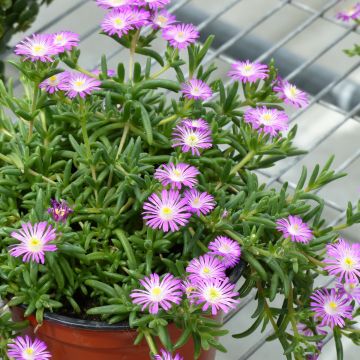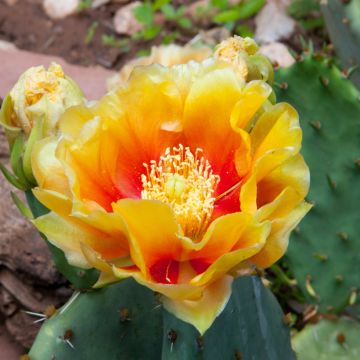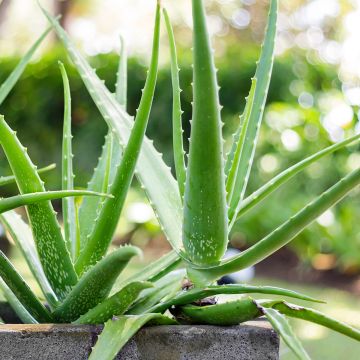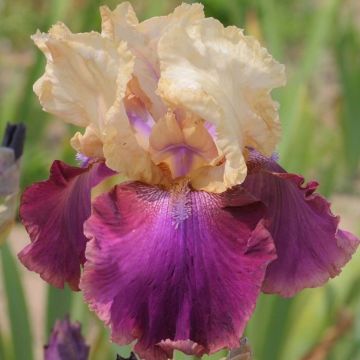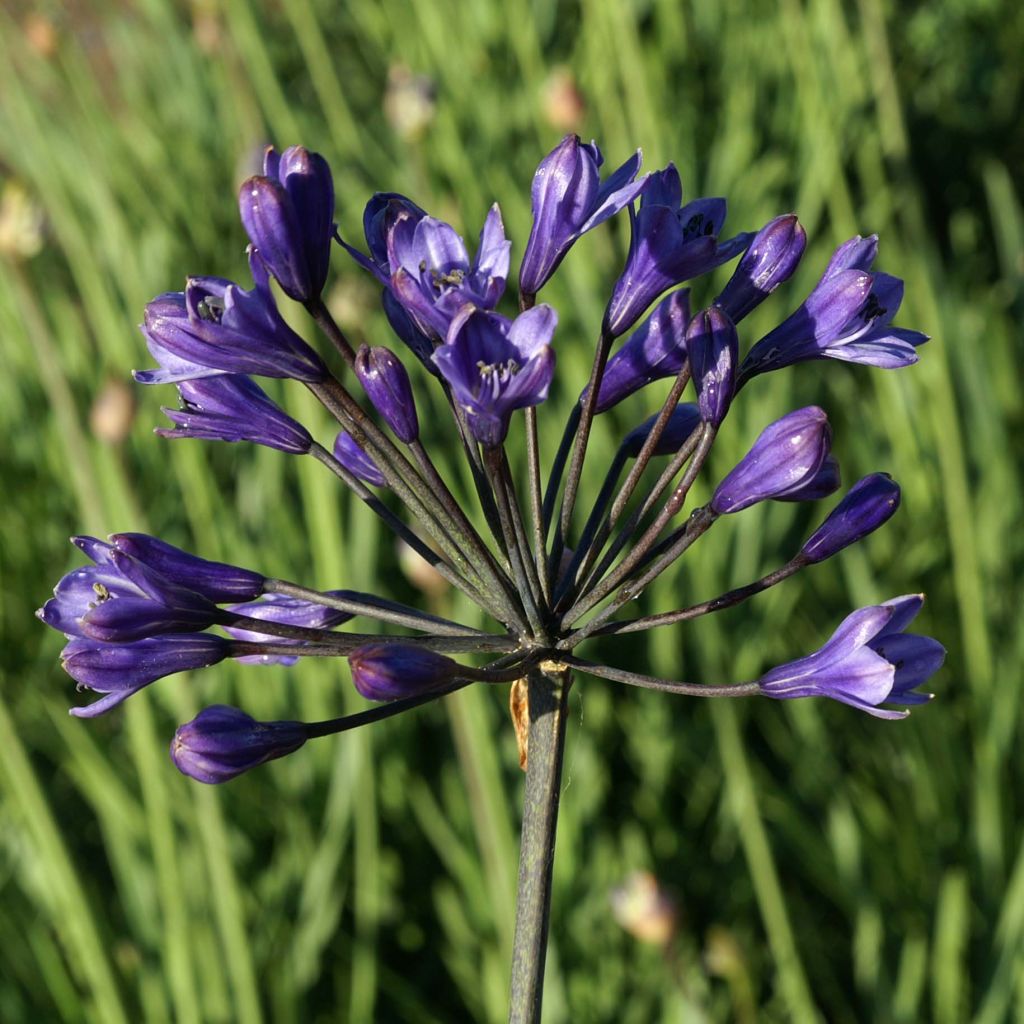

Agapanthus inapertus Intermedius
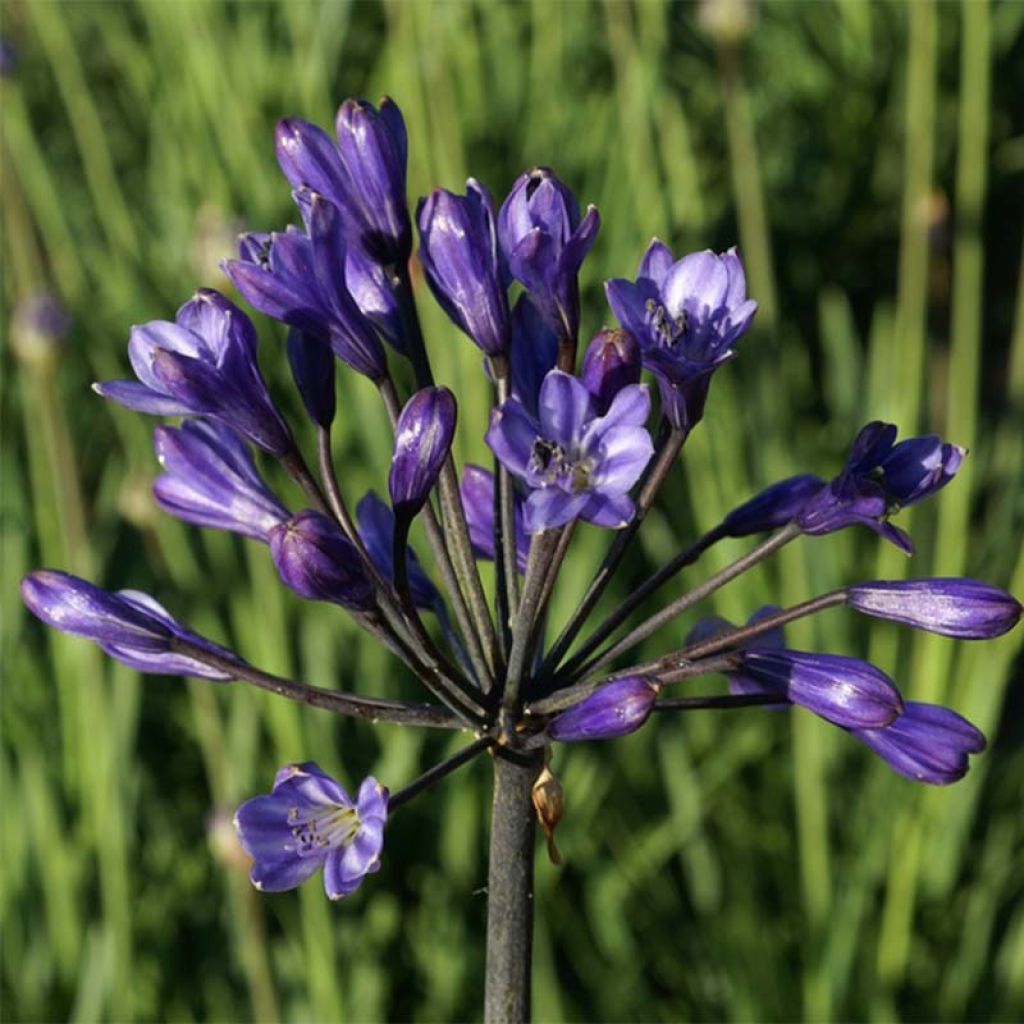

Agapanthus inapertus Intermedius
Agapanthus inapertus Intermedius
Agapanthus inapertus Intermedius
African Lily, Lily of the Nile
Skinny young plant (2 small leaves). To pamper so that it grows fuller.
Marie, 23/07/2020
Special offer!
Receive a €20 voucher for any order over €90 (excluding delivery costs, credit notes, and plastic-free options)!
1- Add your favorite plants to your cart.
2- Once you have reached €90, confirm your order (you can even choose the delivery date!).
3- As soon as your order is shipped, you will receive an email containing your voucher code, valid for 3 months (90 days).
Your voucher is unique and can only be used once, for any order with a minimum value of €20, excluding delivery costs.
Can be combined with other current offers, non-divisible and non-refundable.
Home or relay delivery (depending on size and destination)
Schedule delivery date,
and select date in basket
This plant carries a 12 months recovery warranty
More information
We guarantee the quality of our plants for a full growing cycle, and will replace at our expense any plant that fails to recover under normal climatic and planting conditions.
Would this plant suit my garden?
Set up your Plantfit profile →
Description
The Agapanthus Intermedius is an extraordinary botanical agapanthus known since 1946 but is still rare in cultivation. This stunning plant produces umbels of flowers that start as brilliant and deep violet buds, opening up to a deep blue-violet colour. The flowers are carried by dark stems that emerge from a clump of dark green, ribbon-like foliage marked with brown-purple at the base. This creates a beautiful contrast of colours in summer, and the plant's purple fruiting in autumn adds to its beauty. The deciduous foliage of this variety makes it more hardy, allowing it to adapt well to cultivation in open ground in many regions, provided the soil is well-drained and in full sun.
The Agapanthus inapertus subsp. Intermedius, also known as Agapanthus dyeri, is a bulbous plant that belongs to the Liliaceae family. It originates from the northeast of South Africa, near Mozambique. This plant thrives in meadows and at the edge of forests, mainly in steep rocky areas of the Drakensberg mountains and prefers climates with summer rainfall.
During spring, a wide clump of stiff, linear, dark green foliage about 50 cm (19.7 in) high develops, reaching a spread of 60 cm (23.6 in). Mature plants often have completely deciduous foliage. The characteristic umbels of this species are dense and pendulous, composed of 30 to 40 bright blue-violet flowers on the inside and darker on the outside. These flowers are carried by peduncles of a brown-purple colour, almost black, a shade that can also be found on the upper part of the floral stems. They rise to 70cm (sometimes more on a mature plant), well above the foliage composed of dark green linear leaves, 20-30cm (7.9 - 11.8 in) long and 1.5cm (0.6 in) wide.
The flowering of this plant takes place between July and September, depending on the area. The long, pendulous trumpets, silky and striking, which seem reluctant to open, are a very dark blue-violet and erect in buds, then incline towards the ground. The fruiting of this agapanthus is a beautiful brown-black-purple colour.
This plant variety is considered semi-evergreen to deciduous and can survive temperatures of around -10°C/-12°C once well established. To ensure its survival, it should be planted in a pot that can be stored indoors during winter and placed on a sunny terrace in summer or open ground in a warm location with fresh, well-drained soil. It thrives in various settings, including by the sea, an English cottage, and a contemporary-style city garden. Its dark colour contrasts sharply with white flowers such as gauras, camassias, lavateras, or cleomes. The flowers can also be cut and arranged in a vase, bringing a unique touch to any home.
Agapanthus inapertus Intermedius in pictures
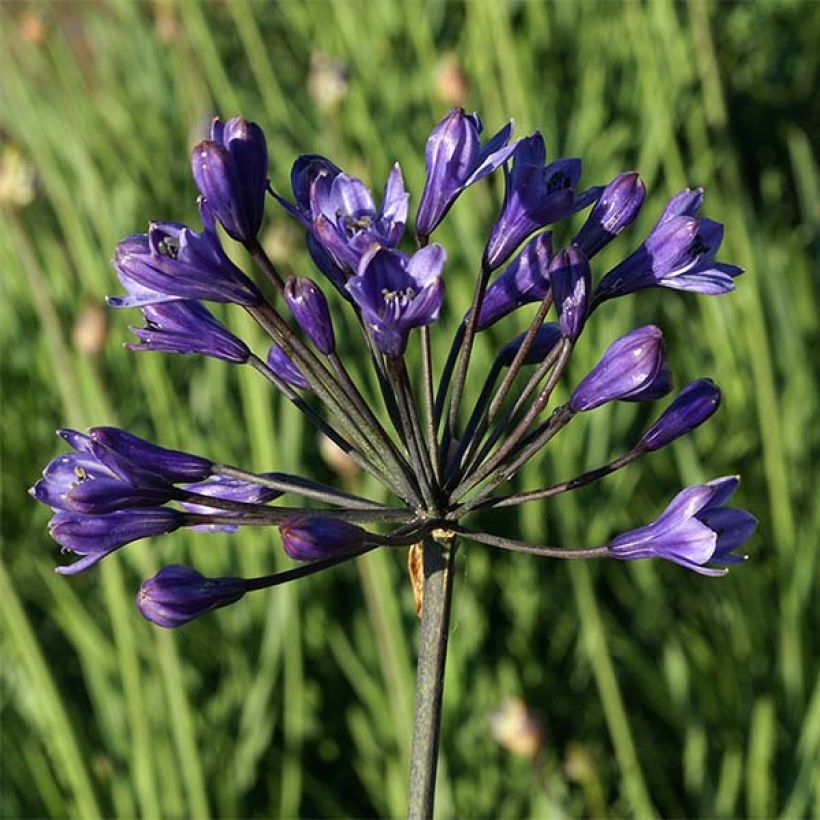

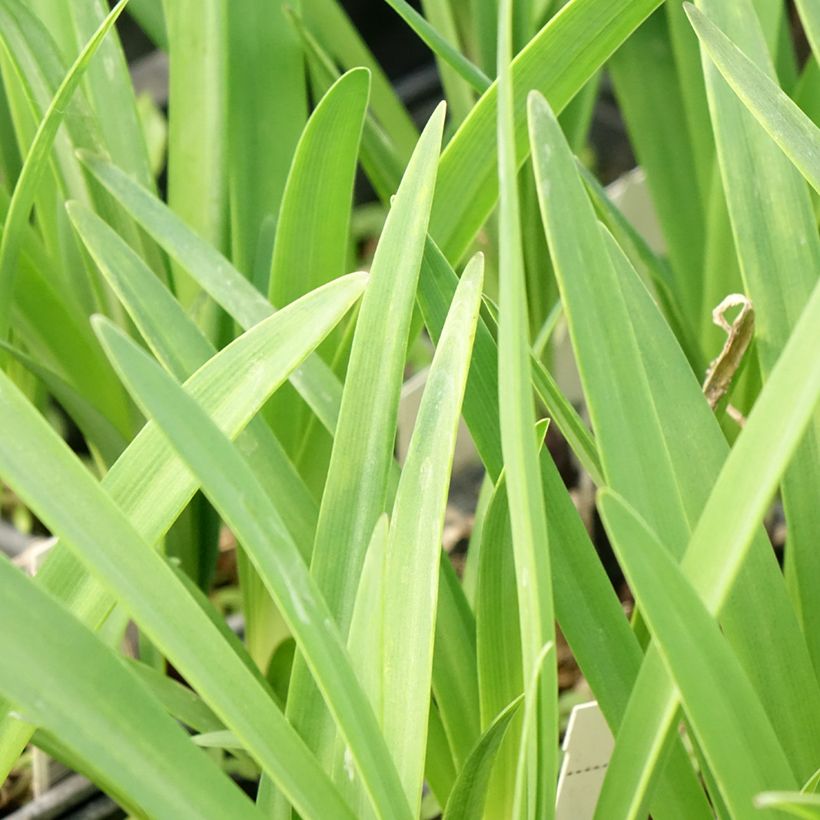

Flowering
Foliage
Plant habit
Botanical data
Agapanthus
inapertus
Intermedius
Alliaceae - Liliaceae
African Lily, Lily of the Nile
Cultivar or hybrid
Other Agapanthus - Lily of the Nile
View all →Planting and care
To grow Agapanthus inapertus Intermedius successfully, plant it in a warm location that receives full sun. The plant is drought-resistant but requires regular watering (twice a week) during its growth period. Ensure the soil is rich, moist, and well-drained, especially in winter. During this dormant period, avoid watering the plant because it does not like excess moisture. To prevent wind damage, mulch the plant base with a 20 cm (7.9 in) thick layer of dead leaves and cover it with a wire mesh. Snow can also offer protection against excess moisture and cold. For potted plants, bring them indoors during winter. When planting, place the Agapanthus 10 cm (3.9 in) deep in a pot containing a mixture of leaf mould and compost. This is because the plant has fleshy roots. Once the plant is established, avoid disturbing it. Remove faded leaves in autumn and cut off the stems so the plant does not exhaust itself by producing seeds.
Planting period
Intended location
Care
Planting & care advice
-
, onOrder confirmed
Reply from on Promesse de fleurs
Similar products
Haven't found what you were looking for?
Hardiness is the lowest winter temperature a plant can endure without suffering serious damage or even dying. However, hardiness is affected by location (a sheltered area, such as a patio), protection (winter cover) and soil type (hardiness is improved by well-drained soil).

Photo Sharing Terms & Conditions
In order to encourage gardeners to interact and share their experiences, Promesse de fleurs offers various media enabling content to be uploaded onto its Site - in particular via the ‘Photo sharing’ module.
The User agrees to refrain from:
- Posting any content that is illegal, prejudicial, insulting, racist, inciteful to hatred, revisionist, contrary to public decency, that infringes on privacy or on the privacy rights of third parties, in particular the publicity rights of persons and goods, intellectual property rights, or the right to privacy.
- Submitting content on behalf of a third party;
- Impersonate the identity of a third party and/or publish any personal information about a third party;
In general, the User undertakes to refrain from any unethical behaviour.
All Content (in particular text, comments, files, images, photos, videos, creative works, etc.), which may be subject to property or intellectual property rights, image or other private rights, shall remain the property of the User, subject to the limited rights granted by the terms of the licence granted by Promesse de fleurs as stated below. Users are at liberty to publish or not to publish such Content on the Site, notably via the ‘Photo Sharing’ facility, and accept that this Content shall be made public and freely accessible, notably on the Internet.
Users further acknowledge, undertake to have ,and guarantee that they hold all necessary rights and permissions to publish such material on the Site, in particular with regard to the legislation in force pertaining to any privacy, property, intellectual property, image, or contractual rights, or rights of any other nature. By publishing such Content on the Site, Users acknowledge accepting full liability as publishers of the Content within the meaning of the law, and grant Promesse de fleurs, free of charge, an inclusive, worldwide licence for the said Content for the entire duration of its publication, including all reproduction, representation, up/downloading, displaying, performing, transmission, and storage rights.
Users also grant permission for their name to be linked to the Content and accept that this link may not always be made available.
By engaging in posting material, Users consent to their Content becoming automatically accessible on the Internet, in particular on other sites and/or blogs and/or web pages of the Promesse de fleurs site, including in particular social pages and the Promesse de fleurs catalogue.
Users may secure the removal of entrusted content free of charge by issuing a simple request via our contact form.
The flowering period indicated on our website applies to countries and regions located in USDA zone 8 (France, the United Kingdom, Ireland, the Netherlands, etc.)
It will vary according to where you live:
- In zones 9 to 10 (Italy, Spain, Greece, etc.), flowering will occur about 2 to 4 weeks earlier.
- In zones 6 to 7 (Germany, Poland, Slovenia, and lower mountainous regions), flowering will be delayed by 2 to 3 weeks.
- In zone 5 (Central Europe, Scandinavia), blooming will be delayed by 3 to 5 weeks.
In temperate climates, pruning of spring-flowering shrubs (forsythia, spireas, etc.) should be done just after flowering.
Pruning of summer-flowering shrubs (Indian Lilac, Perovskia, etc.) can be done in winter or spring.
In cold regions as well as with frost-sensitive plants, avoid pruning too early when severe frosts may still occur.
The planting period indicated on our website applies to countries and regions located in USDA zone 8 (France, United Kingdom, Ireland, Netherlands).
It will vary according to where you live:
- In Mediterranean zones (Marseille, Madrid, Milan, etc.), autumn and winter are the best planting periods.
- In continental zones (Strasbourg, Munich, Vienna, etc.), delay planting by 2 to 3 weeks in spring and bring it forward by 2 to 4 weeks in autumn.
- In mountainous regions (the Alps, Pyrenees, Carpathians, etc.), it is best to plant in late spring (May-June) or late summer (August-September).
The harvesting period indicated on our website applies to countries and regions in USDA zone 8 (France, England, Ireland, the Netherlands).
In colder areas (Scandinavia, Poland, Austria...) fruit and vegetable harvests are likely to be delayed by 3-4 weeks.
In warmer areas (Italy, Spain, Greece, etc.), harvesting will probably take place earlier, depending on weather conditions.
The sowing periods indicated on our website apply to countries and regions within USDA Zone 8 (France, UK, Ireland, Netherlands).
In colder areas (Scandinavia, Poland, Austria...), delay any outdoor sowing by 3-4 weeks, or sow under glass.
In warmer climes (Italy, Spain, Greece, etc.), bring outdoor sowing forward by a few weeks.































